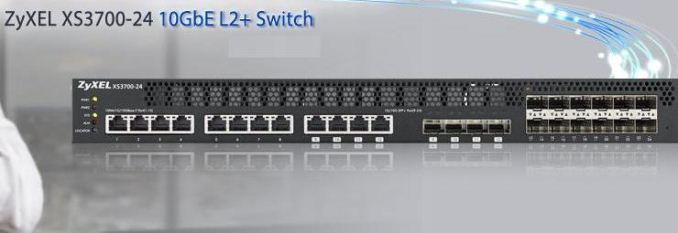Netgear Launches XS728T 28-port 10-Gigabit Smart Managed Switch
In early 2013, Netgear launched the XS708E (8x 10GBASE-T with 1x shared 10G SFP+) unmanaged switch, the XS712T (12x 10GBASE-T with 2x shared 10G SFP+) smart managed switch and the XSM7224 (24x 10GBASE-T with 4x 10G SFP+) fully managed switch. Netgear is announcing the XS728T today, adding a new member to the smart managed switch family. The XS728T comes with 24x 10GBASE-T ports and 4x dedicated 10G SFP+ ports.
Netgear claims that the ProSafe XS728T is the industry’s first 28-port 10-Gigabit Smart Managed Switch. It falls in the same category as the XS712T with respect to the management capabilities. We have been having a good experience using the XS712T in our 10G-capable NAS testbed. It is not a fully managed switch, but does manage to be cost-effective in the process.
Compared to the XS712T, the XS728T brings support static IPv6 routing. Netgear advertises L2+/Layer 3 Lite features in the XS-T series making them suitable for core switches in SMB environments. The datasheet provides information about the L2+ / L3 Lite features.
The performance aspects of the XS712T and the XS728T are summarized in the table below.
The datasheet provides detailed technical specifications. One of the aspects that caught my eye was the acoustic levels. While the XS712T was rated at 49.7 dBA (We use it in our testbed, and the noise is pretty much what makes the usage of the unit difficult during evaluation in a home lab setting), the XS728T comes in at 41.6 dBA. I was also curious about the core platform. Netgear indicated that the XS728T uses Marvell silicon inside. These are fabricated in a smaller process node (we believe it is the Alaska transceivers and some combination of Prestera DX packet processors fabricated in 28nm). These operate a bit cooler, reducing the thermal load. The number of fans in the XS728T has also been doubled to four (compared to two in the XS712T). Taken together, these changes have enabled Netgear to run the fans slower and generate less noise.
The XS728T has a MSRP of $4624. However, as is usual with enterprise equipment, final pricing for end customers may vary from one reseller to another.










